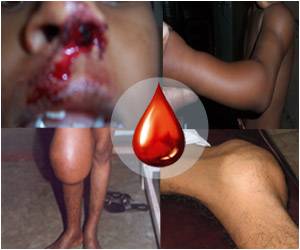In 1954, Why did Moscow handover Crimea to Soviet Ukraine? Was the red phone hotline linking the Kremlin and Washington after the Cuban missile crisis an actual telephone?

Over 700 documents and objects are on display - some for the first time - in the Moscow show on the controversial legacy of Khrushchev, who led a de-Stalinisation campaign and eased the repression and censorship of the Communist regime.
Khrushchev, leader from 1953 to 1964, is best known for denouncing Stalin�s cult of personality in a speech to the Communist Party�s 20th Congress - whose draft is on display for the first time.
But other documents in the exhibition at the Federal Archives reveal that he ordered executions during the Stalin purges of the 1930s.
There is also the original decree that Khrushchev - himself a native of eastern Ukraine - signed on January 25, 1954 to endorse the "handover of the Crimean region" to the Soviet republic of Ukraine.
In another document, a senior Soviet official, Mikhail Tarasov, justifies the peninsula�s handover due to the "unity of the economy, geographical proximity and close economic and cultural ties" between Crimea and Ukraine.
Advertisement
- Shoe-banging at the UN -
Advertisement
The real facts behind one of the most quoted episodes in Khrushchev�s career -- when he allegedly banged his shoe on his desk at the plenary meeting of the United Nations General Assembly in 1960 -- are still being debated, Sorokin said.
"There is no evidence" that Khrushchev pounded his shoe on his desk, angered by the head of the Filipino delegation�s criticism of the Soviet Union�s imperialism in Eastern Europe, Sorokin said.
"The pictures of Khrushchev with a shoe in his hand are fake," Sorokin said, arguing that he "took his shoe off and held it up in disapproval," but did not use it to pound on the desk.
Even if no picture of Khrushchev banging his shoe exists, photographs, including by AFP, clearly show the Soviet leader�s shoe on his desk as he attended the plenary meeting.
"He took off his right shoe, a well-waxed yellow shoe, and waved it in the air above his head, banging it down on the desk with all his might," AFP reported at the time.
- �Hysteria� in Washington ?
The exhibition revisits the Cuban missile crisis: when the deployment of Soviet nuclear missiles to Cuba in 1962 brought superpowers Washington and Moscow to the brink of nuclear war.
A Washington-based secret agent�s encrypted message to Khrushchev describes a "military hysteria" that gripped the United States at the height of the crisis.
According to the message, dated October 27: "The White House, the Pentagon, the State Department and the CIA are working day and night" to "develop emergency evacuation plans for the President (John Kennedy), the government and key ministries to secret locations 300 miles from Washington in case the war is triggered."
The crisis, which ultimately ended in the withdrawal of Soviet missiles from Cuba, led to the easing of strained US-Soviet relations.
One exhibit symbolizes the improvement: a Washington-Moscow hotline - known as the "red telephone" - installed in 1963 to allow direct communications between the US and Soviet leaders.
The device was not actually a telephone or even red. The first was a brown teletype machine that allowed Kennedy and Khrushchev to communicate through encoded written messages.
Khrushchev was a reformer who presided over a period of relative liberalisation in daily life and culture dubbed the Khrushchev Thaw and freed millions of political prisoners from Stalin�s GULAG labour camps.
But the exhibition also shows orders signed by Khrushchev to execute "enemies of the people" in the Moscow region in the late 1930s.
Khrushchev himself disliked the term Thaw to refer his time in power.
"The Thaw is not our term, as weeds grow during a thaw and weeds must be uprooted," he is quoted as saying.
Source-AFP









